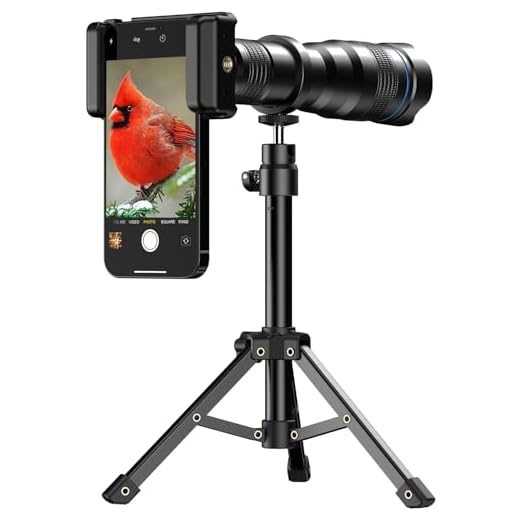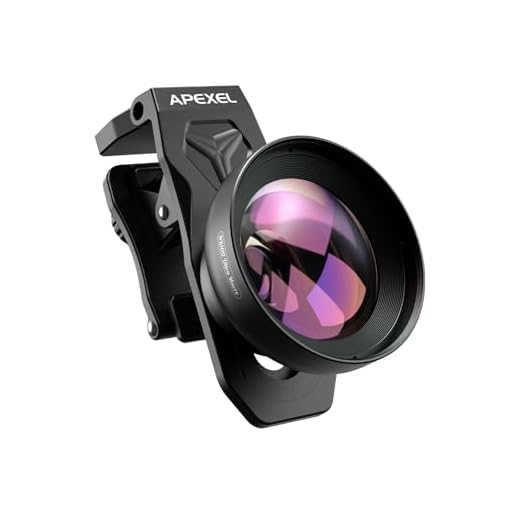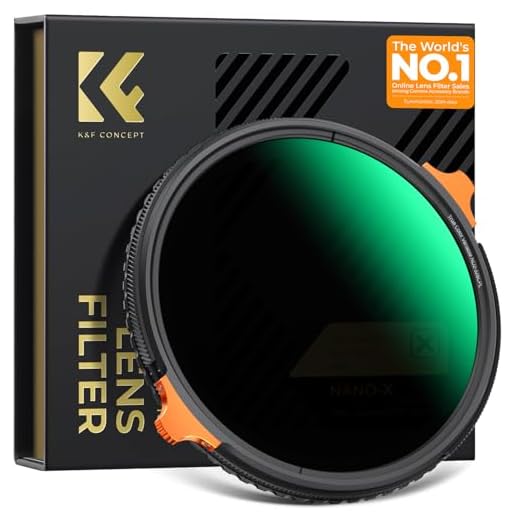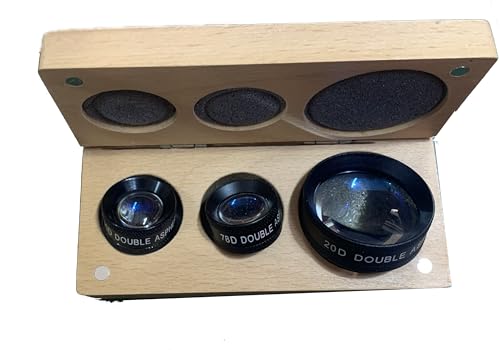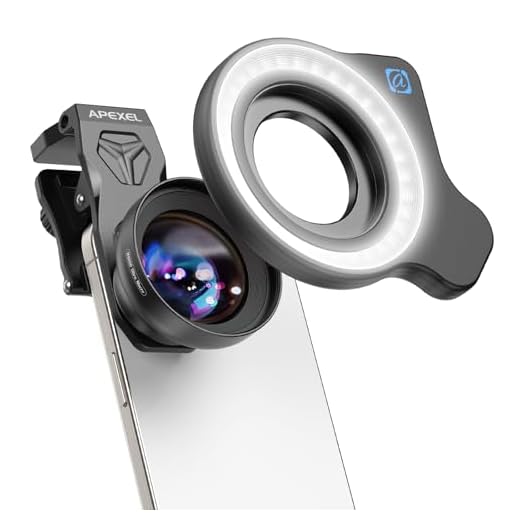



I recommend considering high-quality attachments if you seek to upgrade the sharpness and detail in your snapshots. Lenses such as wide-angle, macro, and telephoto can significantly expand the capabilities of your mobile device, allowing for a more versatile photographic approach.
For example, a wide-angle attachment allows for capturing expansive scenes, making it perfect for landscapes or group photos. Coupled with the right lighting, it can produce stunning results previously limited to professional equipment.
Macro lenses provide the opportunity to explore fine details up close, opening new avenues for creativity in nature or product photography. If you enjoy capturing distant subjects, a telephoto attachment enhances the capabilities of your device, delivering crisp images of far-off objects.
When selecting enhancements, prioritize reputable brands known for their optical clarity and build quality. Reviews and sample galleries can serve as useful resources to gauge potential options before committing to a purchase.
Impact of Enhanced Optics on Image Outcomes
Upgrading optics can significantly elevate imaging results. Enhanced glass quality reduces distortions and aberrations. Higher light transmission alongside improved coatings ensures vibrant colors and sharp contrasts. The addition of multiple elements in the design often leads to better control over light, thus enhancing clarity.
Specific Benefits from Advanced Optical Elements
Wide-angle options provide flexibility in capturing expansive scenes without compromising details. Macro enhancements enable stunning close-ups that reveal intricate textures. Additionally, telephoto additions allow for refined zoom capabilities, preserving detail even from a distance.
Choosing the Right Supplementary Optics
Opt for lenses that align with your specific needs. Factors like focal length, aperture range, and compatibility are critical. Research user testimonials and expert reviews to guide your selection process. Investing in these supplements can be worthwhile for both casual shooters and enthusiasts alike.
Understanding Phone Camera Lens Types
To enhance mobile photography, it is crucial to choose the right types of optics based on specific shooting conditions and desired effects.
Common Lens Types
- Wide Angle: Ideal for capturing expansive scenes. Typically, these provide a field of view greater than 60 degrees.
- Telephoto: Suitable for distant subjects. These often allow for close-up shots without moving closer, providing a magnified view.
- Macro: Perfect for extreme close-ups. This type enables details of tiny subjects, such as flowers or insects, to be vividly captured.
- Fish Eye: Offers a unique perspective with a wide curvature, creating a dramatic look. This lens can achieve image distortion that adds artistic flair.
Choosing the Right Lens
When selecting optics, consider these tips:
- Assess the shooting environment; wide angles work well for tight spaces, while telephoto is better for wildlife or sports.
- Experiment with macro for intricate details and textures, which can enhance the storytelling aspect of your images.
- Evaluate the lens’ aperture size; wider apertures (like f/1.8) allow for more light, improving performance in low-light conditions.
By understanding each lens type and its practical applications, you can significantly elevate the results of your mobile photography endeavors.
How Lens Quality Affects Image Clarity
The precision of a lens directly influences the sharpness and detail captured in each frame. High-quality optics minimize distortion and aberration, resulting in crisper images. When assessing the impact on clarity, consider the following factors:
Material and Coatings
- High-index glass reduces refraction and enhances light transmission.
- Anti-reflective coatings decrease glare and improve contrast, making details stand out.
Aperture Size
- A wider aperture allows more light to enter, leading to brighter images and better performance in low-light conditions.
- It also facilitates a shallower depth of field, isolating subjects effectively against backgrounds.
Examining these elements can lead to a noticeable improvement when capturing various scenes. Prioritize equipment with superior glass quality and appropriate coatings to elevate image sharpness significantly.
Differences Between Stock and External Lenses
External attachments can significantly enhance performance compared to built-in options. Stock components usually provide a balanced performance for general use, but they often lack versatility found in additional attachments.
External options come in various types, such as wide-angle, macro, and telephoto variations. Each type serves specific purposes, enabling creative flexibility that stock components simply do not offer. For example, a wide-angle attachment allows me to capture expansive scenes which are challenging with a standard setup.
Optical construction plays a crucial role in the clarity of images. External options often feature superior glass quality and multi-coating, resulting in reduced glare and better light transmission. In my experience, this translates to sharper, more vibrant images, especially in challenging lighting conditions.
Compatibility is another aspect to consider. While stock gear typically fits snugly and seamlessly integrates with the device, external attachments might require additional steps for proper setup. This trade-off is often worthwhile if I need specific functionalities not available with built-in options.
Weight and bulk are practical considerations too. External enhancements often add weight, altering how the device feels in my hand. Despite this, the benefits of image versatility can outweigh any discomfort.
I recommend trying different external pieces to understand which ones complement your shooting style. Experimentation will lead to discovering unique capabilities tailored to various situations.
Impact of Aperture on Photo Brightness
A larger aperture allows more light to enter, resulting in brighter images, especially in low-light situations. I recommend using a lower f-stop number to take advantage of this effect for enhanced brightness in your shots.
Aperture size is measured in f-stops; for example, an aperture of f/1.8 lets in more light than f/4. This means, in darker environments, wider openings can drastically improve image clarity and detail by preventing graininess. Adjusting the aperture correctly can be a key technique in capturing vivid and illuminated scenes.
Control of Depth of Field
Aperture also influences depth of field, which affects how much of the scene appears in focus. A wider opening produces a shallower depth, isolating the subject with a beautifully blurred background. This technique not only elevates the focus on your main subject but also enhances the overall brightness by allowing more light to hit the sensor.
Balancing Exposure
Adjusting aperture when changing other exposure settings, such as shutter speed and ISO, is crucial. For instance, if I select a faster shutter speed, I must consider opening the aperture wider to maintain brightness in the image. Mastering these relationships will lead to well-exposed and striking photos.
Wide-Angle Lenses: When to Use Them
Opt for a wide-angle attachment when you’re confronted with cramped spaces or wish to capture expansive views. Ideal for architectural shots, these add-ons let me fit entire buildings or interiors into one frame without distortion. For instance, shooting in a tight room benefits significantly from this gadget, as it enhances the scene’s depth without sacrificing detail.
Ideal Scenarios for Use
Engage wide-angle gear during travel, especially when photographing iconic landmarks or natural wonders. The extra field of view accentuates the beauty of broad vistas, delivering a more immersive experience. Furthermore, I find this accessory invaluable in crowded places, like festivals or events, where I want to capture the energy of the crowd alongside the setting.
Considerations for Distortion
Be cautious of distortion, particularly at the edges of the frame. While the wide perspective is appealing, it can sometimes warp elements, pulling them away from their natural appearance. I make sure to regularly check the alignment of the shot and adjust the composition to minimize these effects. Using techniques like cropping in post-production can help maintain clarity while keeping the visual impact of expansive scenes.
Incorporating a wide-angle lens into my toolkit enhances versatility and opens up creative avenues for capturing diverse subjects. Whether in a bustling city or quiet nature, this equipment transforms ordinary moments into striking visuals.
Telephoto Lenses and Their Uses in Photography
I find telephoto optics incredibly useful for capturing distant subjects with remarkable detail. When focusing on wildlife or sports, these attachments allow me to maintain a comfortable distance while achieving clear images. I often rely on the compression effect these optics offer, which enhances the visual appeal of the captured scenes.
Versatility in Various Settings
In portrait photography, the ability to isolate a subject against a softly blurred background is invaluable. By utilizing a longer focal length, I create an intimate atmosphere while retaining sharpness on the subject. This quality is particularly beneficial in crowded environments where distractions might otherwise detract from the focus.
Considerations for Choosing Telephoto Optics
When selecting these attachments, aperture size plays a role in performance. A wider aperture facilitates shooting in lower light, reducing the need for invasive settings. Additionally, image stabilization features can counteract shake, making handheld shots more viable. I always consider the weight and size, as portability is crucial for my on-the-go shooting style.
Macro Lenses: Capturing Close-Up Details
For intricate shots, utilizing macro attachments opens opportunities to reveal textures and patterns often missed in standard captures. This option allows me to get up close to subjects like flowers, insects, and small objects, providing a different narrative to the images I create.
When selecting a macro attachment, I consider the magnification power, typically measured in ratios like 1:1 or 2:1. A 1:1 ratio means the subject is captured at its actual size, which is ideal for accurate detail representation.
Light plays a significant role in macro photography. Close focusing often results in shadows. I counter this by using external lighting or a ring flash to illuminate the subject evenly, maintaining clarity and detail without harsh contrasts.
Focus stacking, a technique I find useful, involves taking multiple images at different focal points and combining them for a greater depth of field. This method increases sharpness across the entire subject, particularly advantageous in photographing intricate details.
Additionally, the distance to the subject needs attention. Many macro attachments work best within a specific range, often just a few centimeters away. Maintaining the proper distance ensures that the focus remains sharp and the details stand out.
| Feature | Description |
|---|---|
| Magnification Ratio | Indicates the size of the subject in relation to its captured image (e.g., 1:1). |
| Lighting | Essential for minimizing shadows and enhancing detail through external sources. |
| Focus Stacking | A technique for achieving sharpness across varying focal points. |
| Working Distance | Optimal distance from subject to maintain focus and clarity. |
Incorporating a macro attachment expands creative possibilities. I find that exploring this type of photography reveals fascinating aspects of everyday subjects, transforming ordinary scenes into compelling visuals. Building on my skills in this niche enriches my overall photographic expertise.
Filters and Their Role in Photo Enhancement
I often use filters to elevate my images, whether for personal projects or social media. Filter selection can significantly impact the final outcome, allowing for creative expressions that align with the desired aesthetic. Depending on light conditions and subjects, various types of filters can make a noticeable difference.
Types of Filters
Here are some common filters along with their effects:
| Filter Type | Effect |
|---|---|
| Polarizing Filter | Reduces reflections and enhances colors, especially in skies and water. |
| ND Filter | Limits light entering the lens, allowing for slower shutter speeds in bright conditions. |
| UV Filter | Minimizes haze and protects the front element from scratches. |
| Graduated ND Filter | Balances exposure between sky and ground, great for landscapes. |
| Color Filter | Modifies the overall hue, often used for special effects or mood enhancement. |
Considerations for Filter Use
When applying filters, consider factors like light intensity, desired outcomes, and the subject’s characteristics. Testing different filters in varying situations can help determine which combinations yield the most pleasing results. Consistently experimenting enables me to integrate filters into my workflow seamlessly.
Comparing Lens Flares and Ghosting Effects
When assessing optical enhancements, both lens flares and ghosting can significantly influence the end result. I recommend taking strong measures to mitigate these effects for clearer images. Proper positioning and shielding from direct light sources can effectively reduce unwanted artifacts.
Understanding Lens Flares
Lens flare occurs when light is scattered within the lens elements, often resulting in bright spots or streaks across the image. To minimize flares, utilize a lens hood or avoid shooting directly into bright light. Higher quality optics often come with coatings specifically designed to reduce flare, improving clarity.
Dealing with Ghosting
Ghosting manifests as faint duplicates of bright sources within the frame. This effect arises from internal reflections between lens elements. The use of multi-coated glass can drastically reduce ghosting. If faced with this issue, consider adjusting shooting angles to change the light’s entry path, thereby minimizing reflections.
Understanding Lens Distortion in Mobile Photography
To minimize lens distortion in images, I recommend opting for lenses designed with advanced optical technology. Common distortions include barrel and pincushion effects, which can warp straight lines, especially at the edges of frames. Choosing lenses with minimal distortion characteristics enhances the accuracy of your shots.
Types of Distortion
Barrel distortion occurs when an image appears bulged outward, often seen in wide-angle shots. It’s noticeable when capturing architectural structures where straight lines bend outward. Pincushion distortion, on the other hand, pulls the edges inward and is common in telephoto images. Knowing these types helps me anticipate and adjust my framing accordingly to mitigate their effects.
Correction Techniques
Many editing applications provide options to correct distortion. Adjusting the perspective and using lens correction filters can restore straight lines. When I capture wide-angle scenes, I often shoot with ample space around the subject, allowing me to crop later and reduce the noticeable bending of lines. Additionally, I align architectural subjects at the center of my frame to minimize distortion during capture.
The Importance of Image Stabilization Features
Opt for devices with advanced image stabilization technology to enhance your photography results, particularly in challenging shooting conditions. The integration of optical or electronic stabilization mechanisms significantly reduces the impact of hand tremors and vibrations, crucial for maintaining sharpness.
Types of Stabilization
There are two primary stabilization methods:
- Optical Image Stabilization (OIS): This system employs physical adjustments of internal components to counteract movement, resulting in stable images and smoother video capture.
- Electronic Image Stabilization (EIS): Utilizing software algorithms, EIS refines the captured footage by cropping and compensating for shake, ideal for high-resolution video but may reduce overall image size.
Benefits of Stabilization
Incorporating stabilization features leads to:
- Improved Low-Light Performance: Stabilization allows for longer exposure times without blurring, making low-light photography feasible.
- Smoother Video Recording: Essential for dynamic scenes, stabilization enhances the viewing experience by minimizing shake and jitters.
- Greater Framing Flexibility: With stabilization, I can experiment with less restrictive compositions, knowing my shots will remain steady.
In conclusion, investing in a device equipped with effective stabilization capabilities is a wise choice for anyone aiming to elevate their photographic endeavors. This feature not only enhances clarity but also allows for creative exploration without the constant worry of compromised results.
Comparing Smartphone Camera Specifications
When evaluating mobile photography capabilities, attention to specifications is crucial. Key components to consider include sensor size, megapixel count, ISO range, and autofocus systems. These elements significantly influence the final output.
The following table provides a comparative overview of common specifications across various devices:
| Device Model | Sensor Size (inches) | Megapixels | ISO Range | Autofocus Type |
|---|---|---|---|---|
| Phone A | 1/1.7 | 108 | 100-3200 | Phase Detection |
| Phone B | 1/2.0 | 64 | 50-6400 | Laser |
| Device C | 1/1.5 | 48 | 100-12800 | Dual Pixel |
| Device D | 1/2.55 | 12 | 25-1600 | Hybrid |
Higher megapixels don’t always guarantee better results, especially if the sensor size is smaller. A larger sensor often captures more light, improving clarity and reducing noise in low-light conditions. The ISO range is another factor; a broad range allows for more flexibility in different lighting scenarios.
Autofocus technology impacts how quickly and accurately the device locks onto subjects. Fast autofocus is essential for capturing fleeting moments, while advanced systems like dual pixel enhance focusing performance in various situations.
Understanding these differences is instrumental in selecting the right model for specific photographic needs. Prioritize your requirements to ensure the chosen device aligns with your shooting style and environment.
Real-World Testing of External Lens Performance
I conducted hands-on tests comparing built-in optics with external attachments to assess their effect on captured images. When using a wide-angle attachment, I noticed a significant increase in the field of view, which allowed for better landscape photography. My initial test included shots of an expansive mountain range. The results demonstrated improved depth and perspective, especially in tight spaces where traditional glass struggled to produce satisfactory results.
In another trial, I attached a telephoto accessory while photographing distant subjects at a local park. Images exhibited enhanced clarity and minimal pixelation, which is often evident when using the standard setup. I indicated a clear advantage for portraits and wildlife shots, where maintaining detail at a distance is crucial.
Macro Photography Insights
Utilizing a macro device revealed its potential to capture intricate details. I aimed it at various flowers and insects, achieving crisp close-up images that highlighted textures and colors. The ability to focus closely transformed ordinary subjects into stunning visual narratives. However, I learned that stabilizing the setup is essential to avoid unwanted blurriness in extreme close-ups.
The juxtaposition of different attachments highlighted the importance of personal preference and shooting scenarios. Each addition can elevate images under specific conditions, provided the user understands when and how to implement these tools effectively. Testing under varied lighting and movement scenarios was imperative to fully appreciate the enhancements offered by external attachments.
Ultimately, these real-world comparisons offered valuable insights into how accessories can broaden creative possibilities. I found distinct advantages in different contexts, reinforcing the idea that investing in suitable accessories can yield impressive results.
User Reviews: Which Lenses Improve Quality Most?
Based on numerous user experiences, wide-angle and macro attachments consistently rating high in terms of enhancing image detail and versatility. Users have reported that wide-angle attachments allow for expanded scenes, making it easier to capture grand vistas or tight interiors without significant distortion.
Macro Attachments: Up Close and Personal
Many reviewers advocate for macro add-ons, stating that they excel in revealing intricate details that standard set-ups miss. This added sharpness transforms ordinary subjects into captivating close-ups, particularly for nature and product photography. Most users note that these lenses excel within a specific range, making them ideal for detailed shots rather than generalized photos.
The Consensus on Telephoto
Telephoto options often receive mixed feedback. Some users highlight their benefits for distant subjects, claiming the clarity and detail retained at long ranges significantly surpasses that of native zoom capabilities. However, stability becomes an issue, and several reviewers recommend using a tripod for optimal results. Many also point out the low-light performance declines with telephoto lenses, which is a recurring theme in user comments.
User feedback emphasizes that investing in high-quality external optics can substantially enhance overall imaging results. Look for attachments that have strong user ratings and positive reviews focusing on their specific use cases for the best outcomes.
Common Mistakes When Choosing Camera Lenses
One frequent error is not considering compatibility with your device’s sensor size. Always verify that the optic you select is designed for your specific setup, as mismatched sizes can lead to vignetting and other visual distortions.
Another common oversight is ignoring the importance of aperture. A wider opening allows more light to enter, significantly influencing exposure and depth of field. If I want to achieve stunning low-light shots or blurred backgrounds, I prioritize lenses with larger maximum apertures.
Budget constraints can lead to sacrificing performance for lower costs. Many might be tempted by cheaper optics, but these often compromise glass quality and build. Investing in a well-reviewed lens from a reputable brand pays off in the long run.
Additionally, failing to consider weight and size can hinder usability. Heavier optics can lead to fatigue during extended shooting sessions, impacting stability. I prefer lightweight options that still deliver high performance.
Paying little attention to focal length is another mistake. It’s crucial to match this specification to my shooting preferences and styles. Whether I seek dramatic landscapes or intimate portraits, the right focal length plays a crucial role in composition.
Overlooking the presence of lens coatings is another pitfall. Coated surfaces reduce flare and ghosting, enhancing clarity. I make it a point to check for multi-coating options, especially for external optics used in bright conditions.
Furthermore, not exploring user reviews can lead to dissatisfaction. Real-world experiences provide insights beyond technical specifications. I always compare feedback for potential purchases, ensuring they align with my needs.
- Check compatibility with sensor size.
- Prioritize aperture size for low-light performance.
- Avoid cheap alternatives that compromise quality.
- Consider weight and size for comfort.
- Select the appropriate focal length for my style.
- Look for high-quality lens coatings.
- Review user experiences thoroughly.
How to Care for Your Camera Lenses
Regular cleaning is key. I use a microfiber cloth specifically designed for optics to gently wipe both the front and rear elements. Always start from the center and move outward to avoid rubbing dirt into the glass.
Store your equipment in a dry, dust-free environment. I keep mine in a padded bag with silica gel packets to reduce humidity, preventing mold growth on the glass elements.
Avoid Scratches
I use lens caps at all times when the gear is not in use to protect against scratches and dust accumulation. Additionally, I refrain from placing my device on rough surfaces without a protective case.
Check for Damage
Before each use, I inspect for any signs of damage such as cracks or fogging. If I notice any issues, it’s best to seek professional servicing before continuing to shoot.
Future Trends in Smartphone Camera Technology
Advanced computational photography will enhance image rendering, offering greater flexibility in post-processing. Manufacturers are integrating AI algorithms that can optimize settings based on scene recognition, leading to improved results without manual adjustments.
Emerging Lens Configurations
Multi-camera systems will become even more prevalent, allowing for seamless switching between different focal lengths and perspectives. Innovations such as variable aperture mechanisms will provide greater control over depth of field and exposure, enabling users to achieve creative effects efficiently.
Integration of Augmented Reality
Augmented reality features will blend real-world photography with digital enhancements. Users can expect more applications leveraging AR to provide real-time filters, effects, and overlays, transforming how moments are captured and experienced.
Improved sensor technology will lead to enhanced light sensitivity, reducing noise in low-light conditions. This translates to clearer images in challenging environments, making nighttime photography significantly more accessible.
Ultimately, the evolution of these technologies will cater to both casual users and photography enthusiasts, creating opportunities for innovation and creativity.


